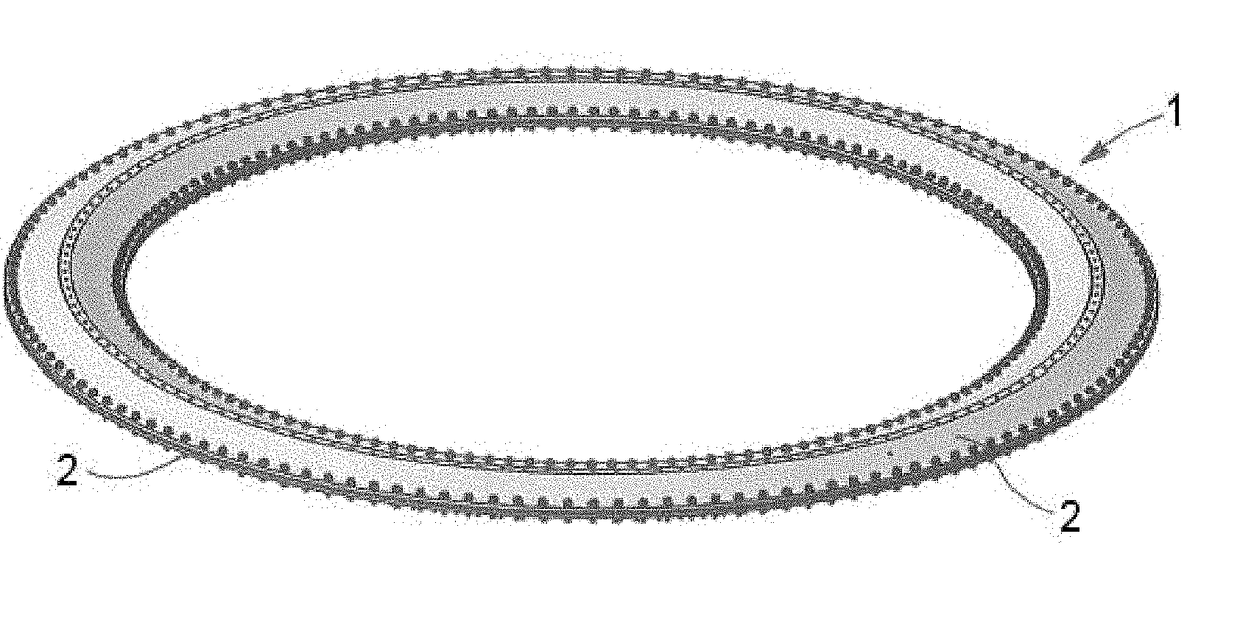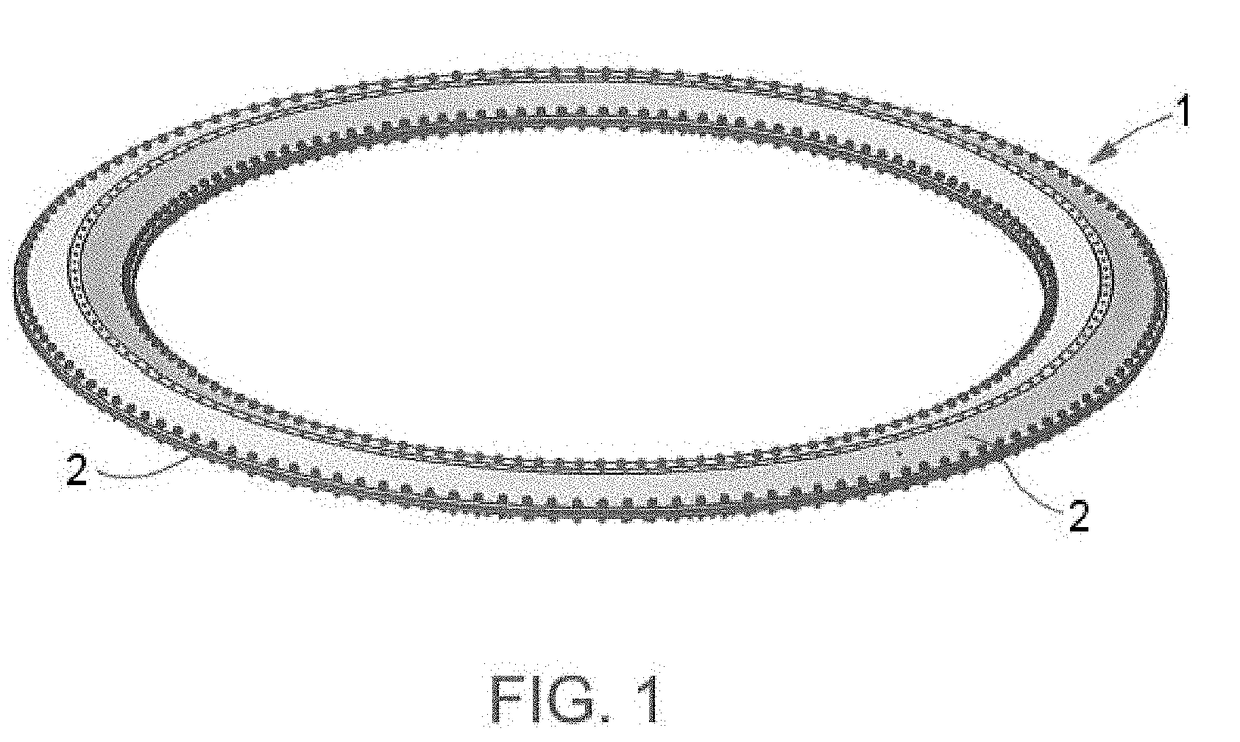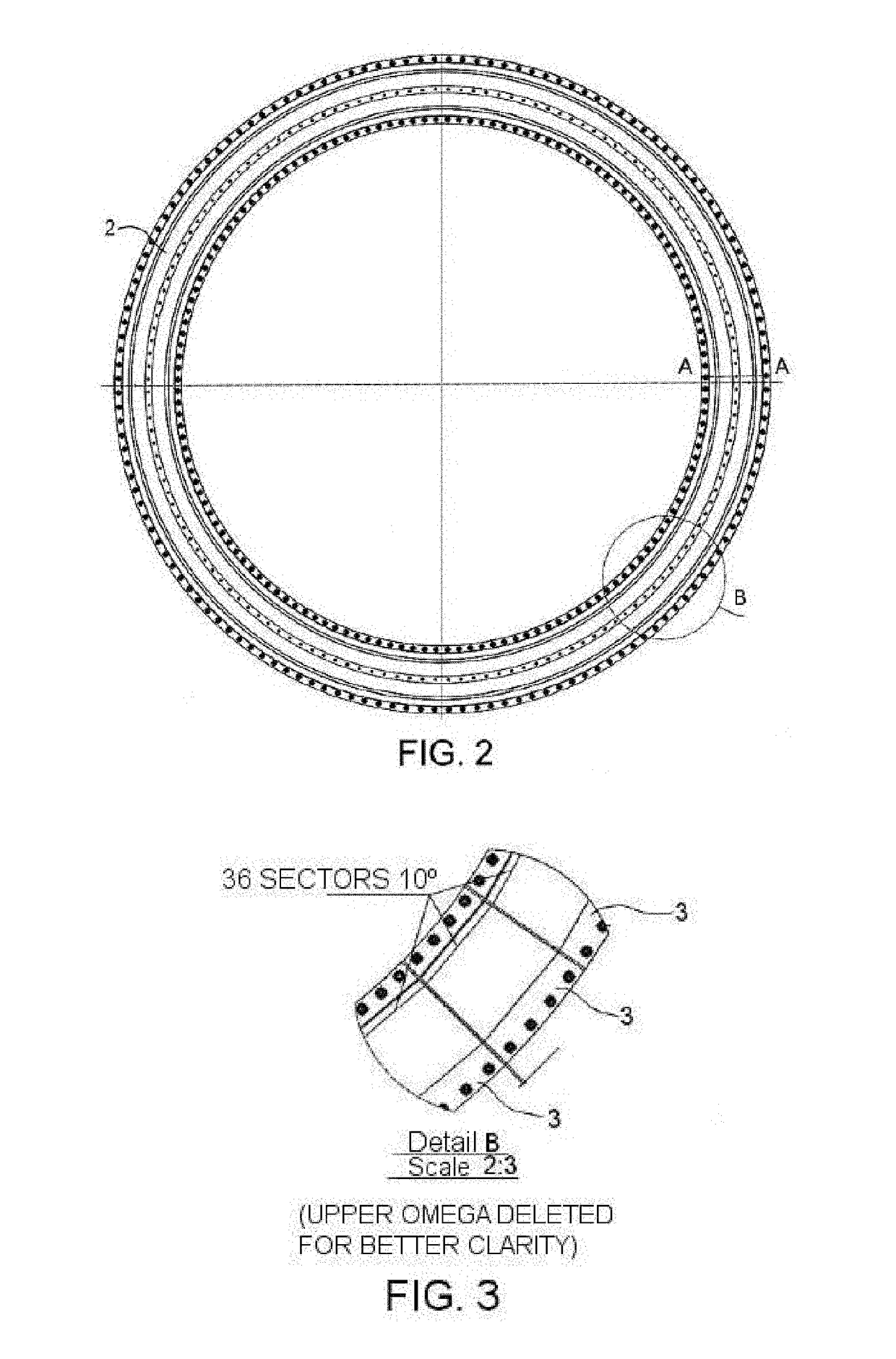Lightweight passive attenuator for spacecraft
a passive attenuator and spacecraft technology, applied in the direction of vibration dampers, cosmonautic components, cosmonautic parts, etc., can solve the problems of high load amplification, low load capacity of systems (up to 2000 kg), and inducing damage to spacecraft equipment and instruments, so as to improve shock reduction and reduce low frequency vibration
- Summary
- Abstract
- Description
- Claims
- Application Information
AI Technical Summary
Benefits of technology
Problems solved by technology
Method used
Image
Examples
Embodiment Construction
[0039]FIG. 1 shows a perspective view of the he light passive attenuator 1 for spacecraft of the invention. It is mainly formed by two omega cross-section rings 2 placed symmetrically. Between the two omega-cross rings 2 there is a gap, where a plurality of damper elements 3 are placed.
[0040]The two omega cross-section rings 2 are the main load path of the light passive attenuator 1 and are in charge of providing the stiffness.
[0041]The two omega cross-section rings 2 are continuous elements which are assembled face to face. The damper elements 3 are placed in parallel with the omega cross-section rings 2, i.e., they are not in the main load path of the light passive attenuator 1. The dynamic payload isolation is obtained by a combination of elastic and damping elements (see FIGS. 8 and 9, which show the spring 9 and damper 10 elements of the light passive attenuator 1).
[0042]The omega cross-section rings 2 and the damper elements 3 are assembled at their ends by means of attachment...
PUM
 Login to View More
Login to View More Abstract
Description
Claims
Application Information
 Login to View More
Login to View More - R&D
- Intellectual Property
- Life Sciences
- Materials
- Tech Scout
- Unparalleled Data Quality
- Higher Quality Content
- 60% Fewer Hallucinations
Browse by: Latest US Patents, China's latest patents, Technical Efficacy Thesaurus, Application Domain, Technology Topic, Popular Technical Reports.
© 2025 PatSnap. All rights reserved.Legal|Privacy policy|Modern Slavery Act Transparency Statement|Sitemap|About US| Contact US: help@patsnap.com



